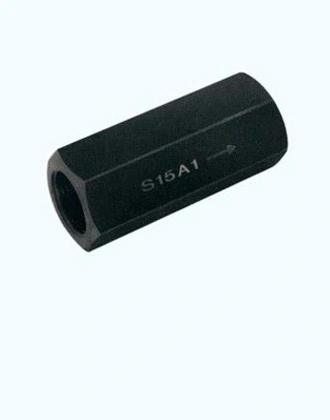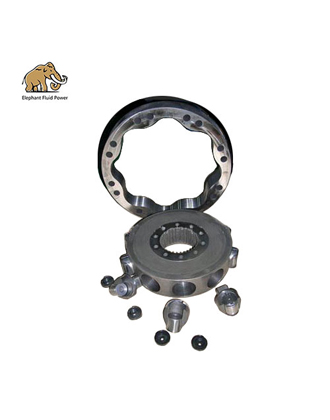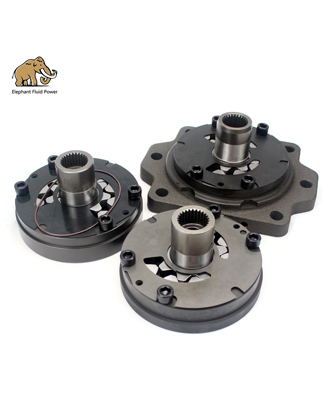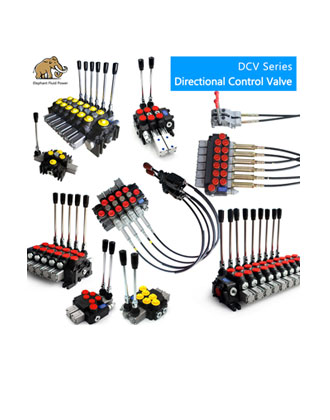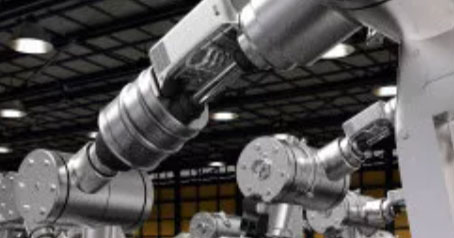Piston pump is an important device in hydraulic system. The hydraulic cylinder is powered by hydraulic pressure, and the hydraulic cylinder pushes the conveying cylinder and outputs the material in the conveying cylinder to the pipeline. It relies on the reciprocating motion of the plunger in the cylinder body to change the volume of the sealed working chamber to achieve oil absorption and oil pressure. It is widely used in occasions where high pressure, large flow and flow need to be adjusted, such as hydraulic presses, construction machinery and ships, in sewage treatment, solid waste treatment, mining and metallurgy, dredging, dredging, petrochemical, power plants, cement industry and other fields Also very broad. So why can it be widely used?
Because hydraulic piston pump spare parts do not require external energy, only the force of the flowing water provides them with the energy they need. Their device is extremely simple, with only two moving parts. It is a kind of reciprocating pump, which belongs to the volume pump. Its piston is driven by the eccentric rotation of the pump shaft to reciprocate, and its suction and discharge valves are all one-way valves. When the piston is pulled outward, the pressure in the working chamber decreases and the outlet valve closes. When it is lower than the inlet pressure, the inlet valve opens and the liquid enters; when the piston is pushed inward, the working chamber pressure rises and the inlet valve closes. When the pressure is higher than the outlet pressure, the outlet valve opens. The valve opens and the liquid drains. When the drive shaft drives the cylinder to rotate, the swash plate pulls or pushes the piston out of the cylinder to complete the oil suction and discharge process. The oil in the working cavity formed by the piston and the cylinder hole is communicated with the suction and discharge cavities of the pump respectively through the oil distribution plate. The variable mechanism is used to change the inclination of the swash plate, and the displacement of the pump can be changed by adjusting the inclination of the swash plate. The total stroke of the reciprocating motion of the piston pump piston is unchanged, which is determined by the lift of the cam. The amount of oil supplied to the plunger per cycle depends on the oil supply stroke, which is variable without being controlled by the camshaft. The start time of fuel supply does not change with the change of fuel supply stroke. Rotating the plunger changes the timing of the end of fuel supply and thus the amount of fuel supplied. When the plunger pump is working, under the action of the cam on the camshaft of the fuel injection pump and the plunger spring, the plunger is forced to reciprocate up and down to complete the oil pumping task.
In order to make the products more suitable for people's use scenarios, Elephant Fluid Power Co., Ltd. also reduces the operating noise of the piston pump to a lower level on the basis of the advantages of high rated pressure, compact structure, high efficiency and convenient flow adjustment. Low (less than 80 decibels), their hydraulic piston pumps run more stably, and because of the business philosophy, the pricing is also low. If many big brands of hydraulic piston pumps need to be replaced, they can be purchased directly from Elephant Hydraulic Company. Their products are the most complete and can be perfectly interchanged with all brands of piston pumps. Not only hydraulic pump for sale, but also hydraulic motors, hydraulic reducers, etc. can be provided.
how does a piston pump work
how does a hydraulic pump work
how a hydraulic piston pump works
what is hydraulic pump
types of hydraulic piston pumps
hydraulic pump working video
piston pump working principle pdf
hydraulic pump diagram
 French
French
 Portuguese
Portuguese
 Russian
Russian
 German
German
 Spanish
Spanish
 Japanese
Japanese
 Korean
Korean
 Irish
Irish
 Greek
Greek
 Turkish
Turkish
 Italian
Italian
 Danish
Danish
 Romanian
Romanian
 Indonesian
Indonesian
 Czech
Czech
 Afrikaans
Afrikaans
 Swedish
Swedish
 Polish
Polish
 Basque
Basque
 Catalan
Catalan
 Esperanto
Esperanto
 Hindi
Hindi
 Lao
Lao
 Albanian
Albanian
 Amharic
Amharic
 Armenian
Armenian
 Azerbaijani
Azerbaijani
 Belarusian
Belarusian
 Bengali
Bengali
 Bosnian
Bosnian
 Bulgarian
Bulgarian
 Cebuano
Cebuano
 Chichewa
Chichewa
 Corsican
Corsican
 Croatian
Croatian
 Dutch
Dutch
 Estonian
Estonian
 Filipino
Filipino
 Finnish
Finnish
 Frisian
Frisian
 Galician
Galician
 Georgian
Georgian
 Gujarati
Gujarati
 Haitian
Haitian
 Hausa
Hausa
 Hawaiian
Hawaiian
 Hebrew
Hebrew
 Hmong
Hmong
 Hungarian
Hungarian
 Icelandic
Icelandic
 Igbo
Igbo
 Javanese
Javanese
 Kannada
Kannada
 Kazakh
Kazakh
 Khmer
Khmer
 Kurdish
Kurdish
 Kyrgyz
Kyrgyz
 Latin
Latin
 Latvian
Latvian
 Lithuanian
Lithuanian
 Luxembourg
Luxembourg
 Macedoniar
Macedoniar
 Malagasy
Malagasy
 Malay
Malay
 Malayalam
Malayalam
 Maltese
Maltese
 Maori
Maori
 Marathi
Marathi
 Mongolian
Mongolian
 Burmese
Burmese
 Nepali
Nepali
 Norwegian
Norwegian
 Pashto
Pashto
 Persian
Persian
 Punjabi
Punjabi
 Serbian
Serbian
 Sesotho
Sesotho
 Sinhala
Sinhala
 Slovak
Slovak
 Slovenian
Slovenian
 Somali
Somali
 Samoan
Samoan
 Scots Gaelic
Scots Gaelic
 Shona
Shona
 Sindhi
Sindhi
 Sundanese
Sundanese
 Swahili
Swahili
 Tajik
Tajik
 Tamil
Tamil
 Telugu
Telugu
 Thai
Thai
 Ukrainian
Ukrainian
 Urdu
Urdu
 Uzbek
Uzbek
 Vietnamese
Vietnamese
 Welsh
Welsh
 Xhosa
Xhosa
 Yiddish
Yiddish
 Yoruba
Yoruba
 Zulu
Zulu

